Quando a Ford anunciou recentemente o lançamento do Mustang Mach-E, novo SUV elétrico derivado da família, muitos se surpreenderam com a ousadia da proposta trazendo elementos totalmente diferentes da versão tradicional do esportivo. Mais curioso é saber que, desde a sua chegada ao mercado, há 55 anos, o “muscle car” já serviu de inspiração para muitos projetos igualmente disruptivos criados nos laboratórios de design da marca.
A maioria desses modelos não chegou às ruas e poucos avançaram até a fase de construção de protótipos, para avaliação da viabilidade de mercado. Este é o caso da versão station wagon do Mustang, um dos vários estudos desenvolvidos nos primeiros anos após o lançamento para ampliar a linha, na tentativa de capitalizar o seu enorme sucesso.
Um protótipo funcional do modelo foi construído em 1966, usando elementos de design que depois foram incorporados em outros carros, no final dos anos 1960. Todos os conceitos do Mustang station wagon tinham apenas três portas, seguindo um estilo mais europeu em relação ao cupê tradicional que os americanos conheciam.
Nas fotos anexas, é possível ver essa versão rara e outros conceitos do Mustang, pré e pós-lançamento, que não chegaram a ser produzidos: um conversível de dois lugares, de 1961-62; o Allegro, de 1962; o Avanti/Allegro, de 1963; o Mustang 4 portas, de 1965; os Mach I, de 1966; o Allegro II, de 1967; o Mach II, de 1967; o Milano, de 1970; o RSX, de 1980; o Rambo, de 1990; e o conversível Mach III, de 1992.
 Crédito:Divulgação/Ford Early in the gestation of the original Mustang, Ford designers also considered a number of two-seater studies. These were seen as a more affordable return to the roots of Thunderbird, which by this time had grown into a much larger four-seater. The idea of a two-seat Mustang was something designers returned to frequently in the period between the original Mustang 1 concept and the 1992 Mach III. Aside from some track-oriented Mustangs that had the rear seats removed to save weight, there has never been a strictly two-seat production Mustang.
Crédito:Divulgação/Ford Early in the gestation of the original Mustang, Ford designers also considered a number of two-seater studies. These were seen as a more affordable return to the roots of Thunderbird, which by this time had grown into a much larger four-seater. The idea of a two-seat Mustang was something designers returned to frequently in the period between the original Mustang 1 concept and the 1992 Mach III. Aside from some track-oriented Mustangs that had the rear seats removed to save weight, there has never been a strictly two-seat production Mustang. Crédito:Divulgação/Ford The Mach III provided the first public hints of the new design direction that was coming for the fourth-generation Mustang. While classic elements like the grille pony badge, side scoops and tri-bar taillamps were included on the 1994 Mustang, the two-seater layout and the low-cut speedster windshield have never been part of a regular production Mustang.
Crédito:Divulgação/Ford The Mach III provided the first public hints of the new design direction that was coming for the fourth-generation Mustang. While classic elements like the grille pony badge, side scoops and tri-bar taillamps were included on the 1994 Mustang, the two-seater layout and the low-cut speedster windshield have never been part of a regular production Mustang. Crédito:Divulgação/Ford This alternative proposal dubbed, “Rambo,” was deemed too extreme for production.
Crédito:Divulgação/Ford This alternative proposal dubbed, “Rambo,” was deemed too extreme for production. Crédito:Divulgação/Ford First shown publicly at the February 1970 Chicago Auto Show, the Mustang Milano concept previewed the nearly horizontal rear deck and sharp, extended nose that would be seen on the production 1971 model. However, aside from those two elements, the Milano didn’t really bear much resemblance to any production Mustang. In fact, the car that probably drew most heavily on the Milano profile was the Australian-market Falcon XB coupe of the mid-1970s.
Crédito:Divulgação/Ford First shown publicly at the February 1970 Chicago Auto Show, the Mustang Milano concept previewed the nearly horizontal rear deck and sharp, extended nose that would be seen on the production 1971 model. However, aside from those two elements, the Milano didn’t really bear much resemblance to any production Mustang. In fact, the car that probably drew most heavily on the Milano profile was the Australian-market Falcon XB coupe of the mid-1970s.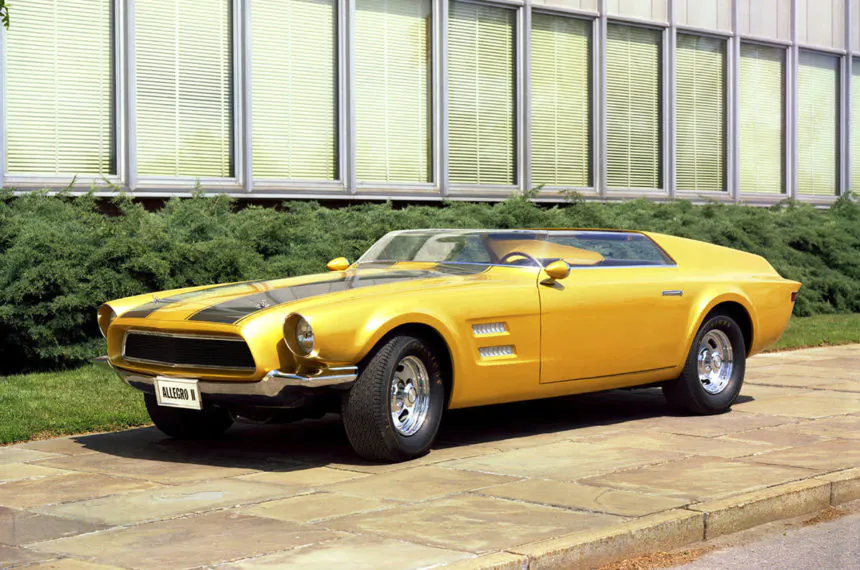 Crédito:Divulgação/Ford In 1967, Ford designers decided to reprise one of the original Mustang design concepts from 1962 with a new form and repurposed name. Starting with the Avanti/Allegro fastback coupe, the greenhouse was removed and replaced with a low-cut speedster-style windshield, rollbar, flying buttresses on the rear deck and a new rear end. The reworked concept was dubbed Allegro II.
Crédito:Divulgação/Ford In 1967, Ford designers decided to reprise one of the original Mustang design concepts from 1962 with a new form and repurposed name. Starting with the Avanti/Allegro fastback coupe, the greenhouse was removed and replaced with a low-cut speedster-style windshield, rollbar, flying buttresses on the rear deck and a new rear end. The reworked concept was dubbed Allegro II.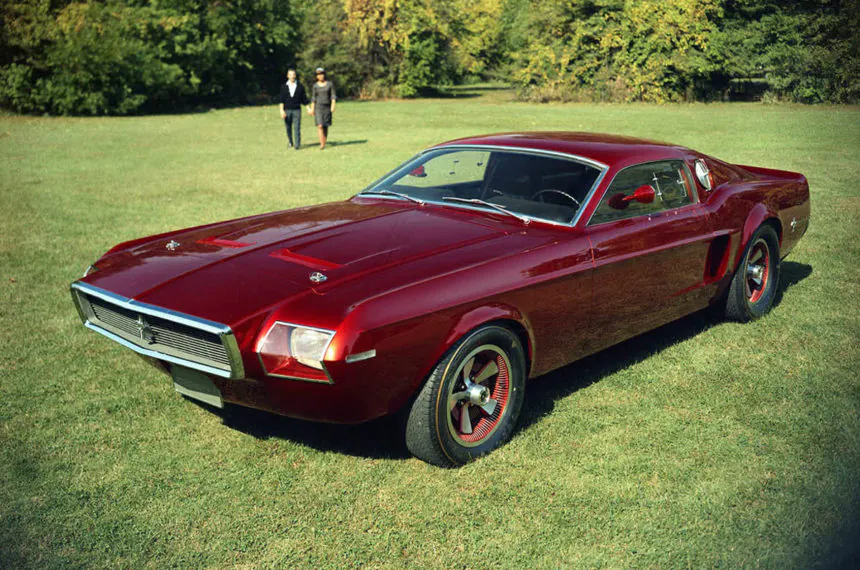 Crédito:Divulgação/Ford As the first-generation Mustang transitioned from a pony car to a larger and heavier big-block muscle car, the Mach 1 concept was created as a preview of the 1968 model. The original nose of the concept drew inspiration from the 1963 Mustang II concept.
Crédito:Divulgação/Ford As the first-generation Mustang transitioned from a pony car to a larger and heavier big-block muscle car, the Mach 1 concept was created as a preview of the 1968 model. The original nose of the concept drew inspiration from the 1963 Mustang II concept.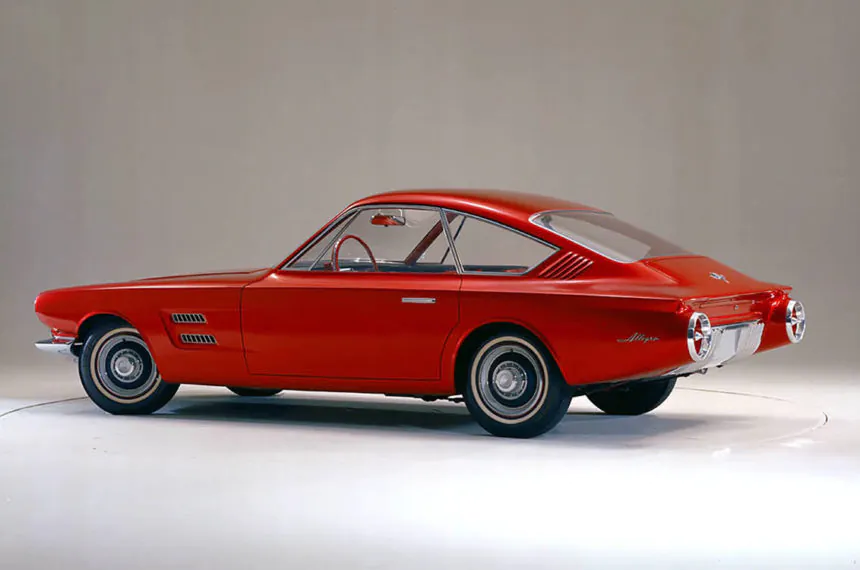 Crédito:Divulgação/Ford As Avventura moved from sketch to physical design model, the hatch was replaced with a trunk and the rear seat was switched to a more conventional forward-facing orientation. Originally shown internally as Avanti, the name was eventually changed to Allegro, likely because Studebaker had introduced its own production Avanti coupe around the same time.
Crédito:Divulgação/Ford As Avventura moved from sketch to physical design model, the hatch was replaced with a trunk and the rear seat was switched to a more conventional forward-facing orientation. Originally shown internally as Avanti, the name was eventually changed to Allegro, likely because Studebaker had introduced its own production Avanti coupe around the same time.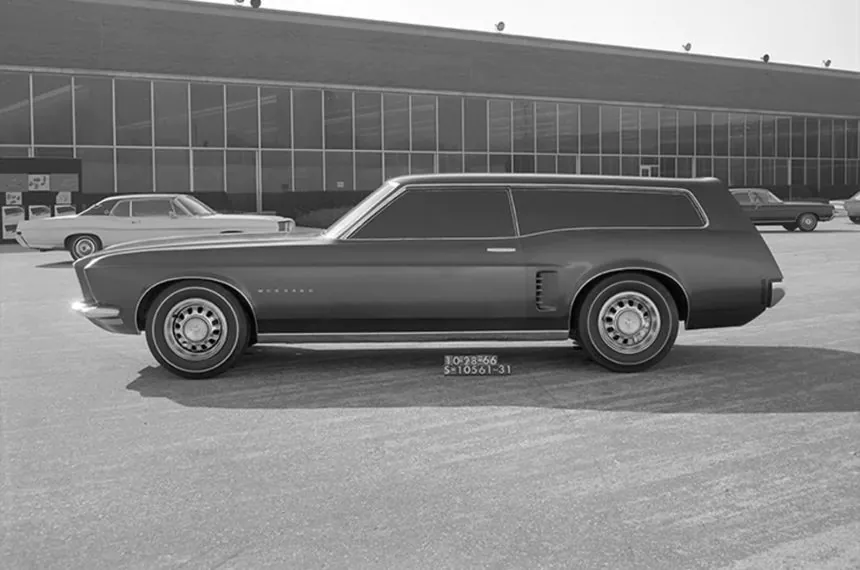 Crédito:Divulgação/Ford
Crédito:Divulgação/Ford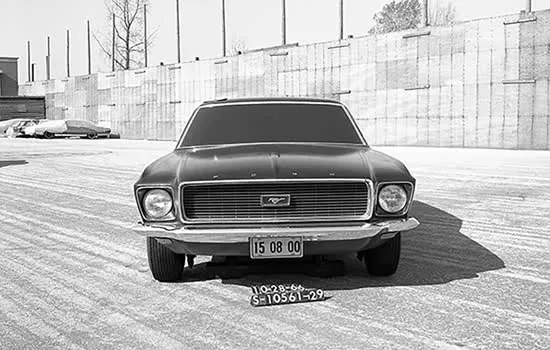 Crédito:Divulgação/Ford Mustang Station Wagon Concept 1966
Crédito:Divulgação/Ford Mustang Station Wagon Concept 1966
- Data: 26/12/2019 10:12
-
Alterado:26/12/2019 10:12
- Autor: Redação
- Fonte: FORD










